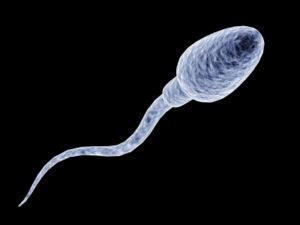While much time and energy is spent investigating new techniques in female fertility preservation, the male side of things does not receive much attention. This is primarily because there is one quick and easy way for men to preempt medically induced infertility, that is, sperm banking. This common procedure actually consists of sperm collection, freezing and thawing (cryopreservation), and artificial insemination.
An Italian monk described the first case of successful sperm cryopreservation in 1776. He reported that frozen and thawed sperm were still mobile. The monk later used this technique to successfully inseminate and breed animals. Interestingly, it took a few decades before either of these techniques was used in humans. It wasn’t until the 1790s that human artificial insemination was first reported, when the fresh sperm of a husband was used, in a clinical setting, to impregnate his wife.

While cryopreservation of animal sperm was increasingly used in the twentieth century for livestock breeding, human sperm did not survive the freezing and thawing process as well. It was not until scientists discovered that sugary glycerol prevented ice crystals from forming in frozen sperm that cryopreservation became truly viable. The development of liquid nitrogen tanks in the 1970s then made long-term storage an option for patients.
Currently, sperm banking is frequently used prior to medical treatments that may reduce fertility, such as chemotherapy and stem cell transplants. However, sperm banking is not an option for every one. According to Dr. Robert Brannigan, Associate Professor in the Department of Urology at Northwestern University’s Feinberg School of Medicine, “A patient generally needs to have had a nocturnal emission or regular ejaculation in order to be able to provide a sample for sperm cryopreservation.” Currently, there are no proven fertility preservation treatments for prepubertal boys.
Fortunately, research trials are currently underway to investigate the success of cryopreservation of immature testicular tissue. Brannigan cautions, “To date, no center has successfully taken immature testis tissue and developed it into mature sperm.” However, given the advances in ovarian tissue cryopreservation over recent years, it is possible that testicular cryopreservation of a 5 year-old today will give him a chance to have children by the time he is an adult. Interested readers in this can find centers that perform this investigational technique by calling the FERTline Fertility Preservation hotline.
Though sperm banking is available at relatively low costs, many male patients do not hear about possible fertility risks due to cancer treatment until it is too late. Patients can raise awareness of this issue by encouraging their oncologists to spread the word to newly diagnosed patients. Do it today!

